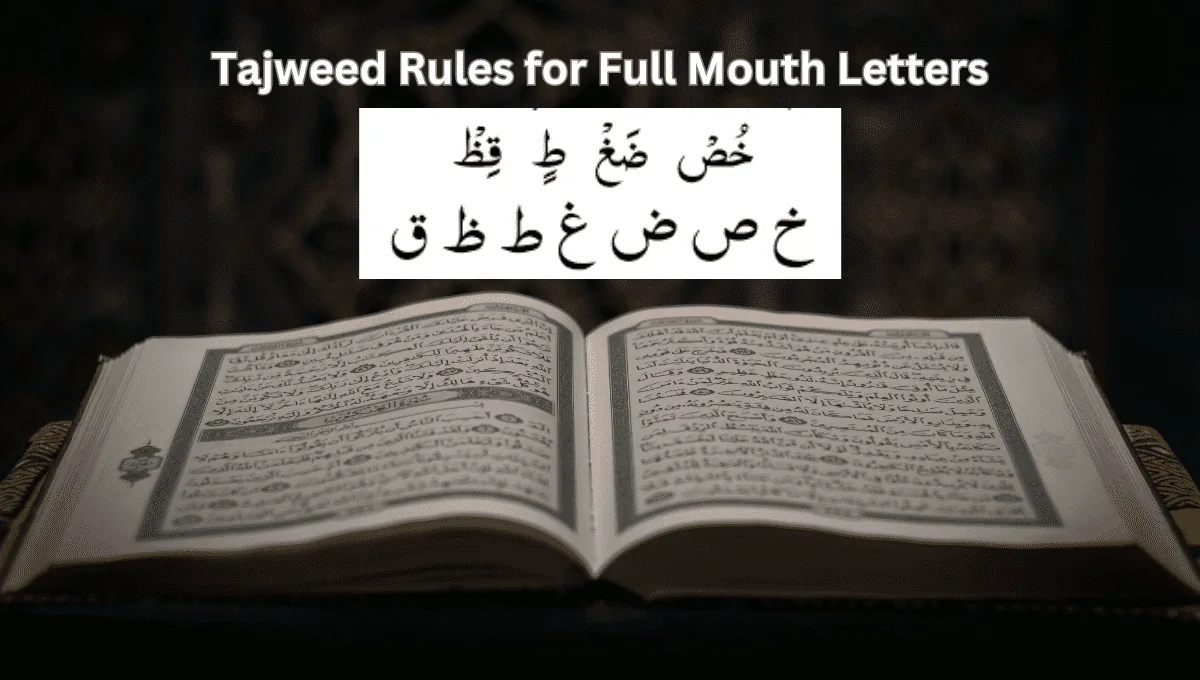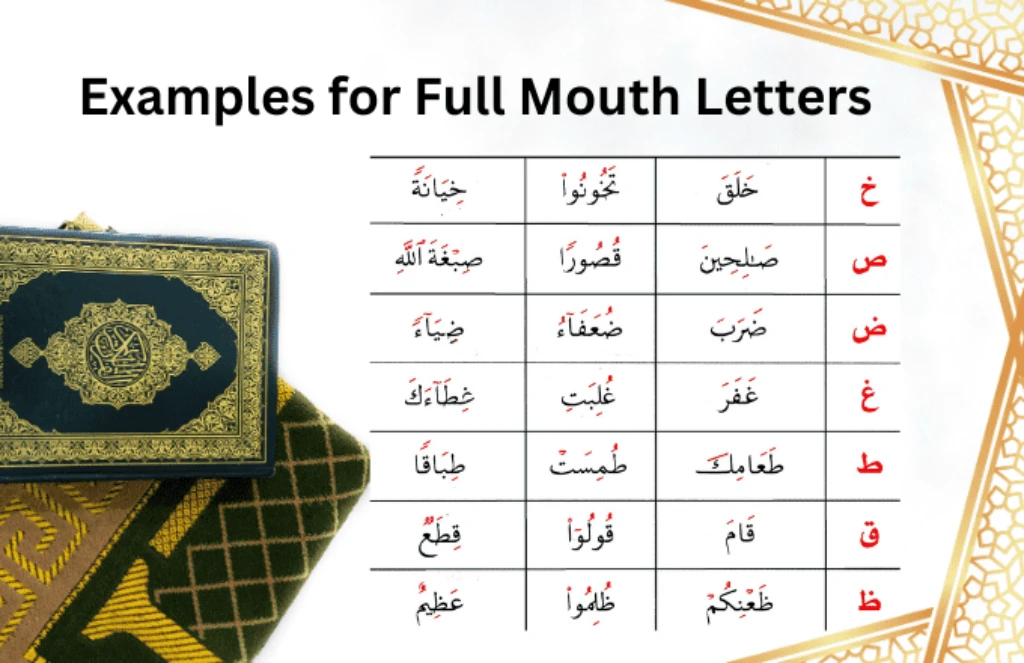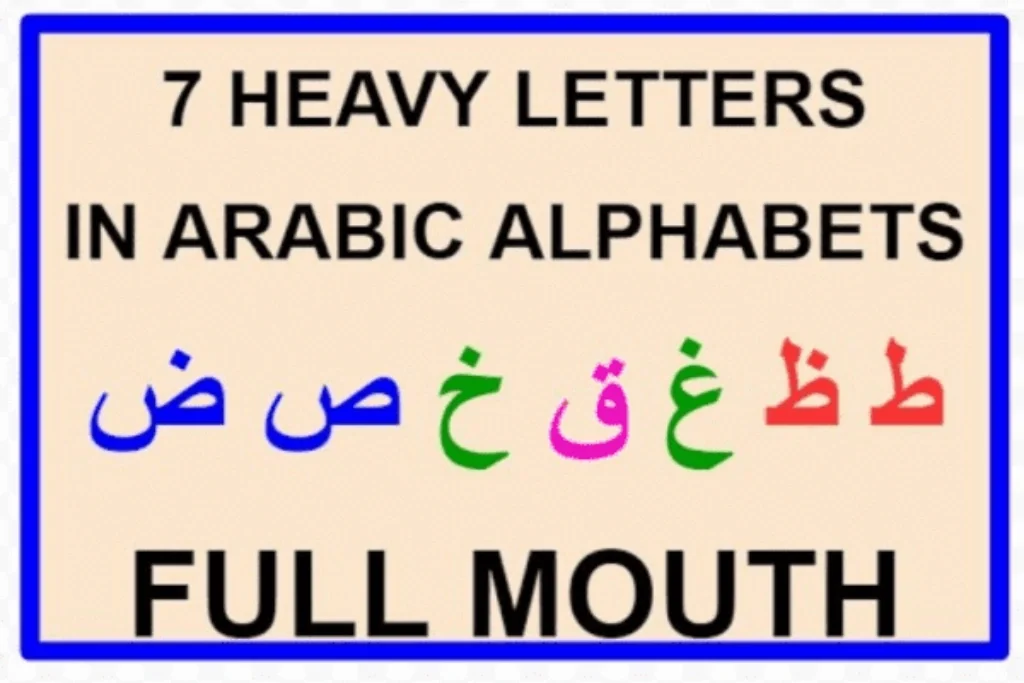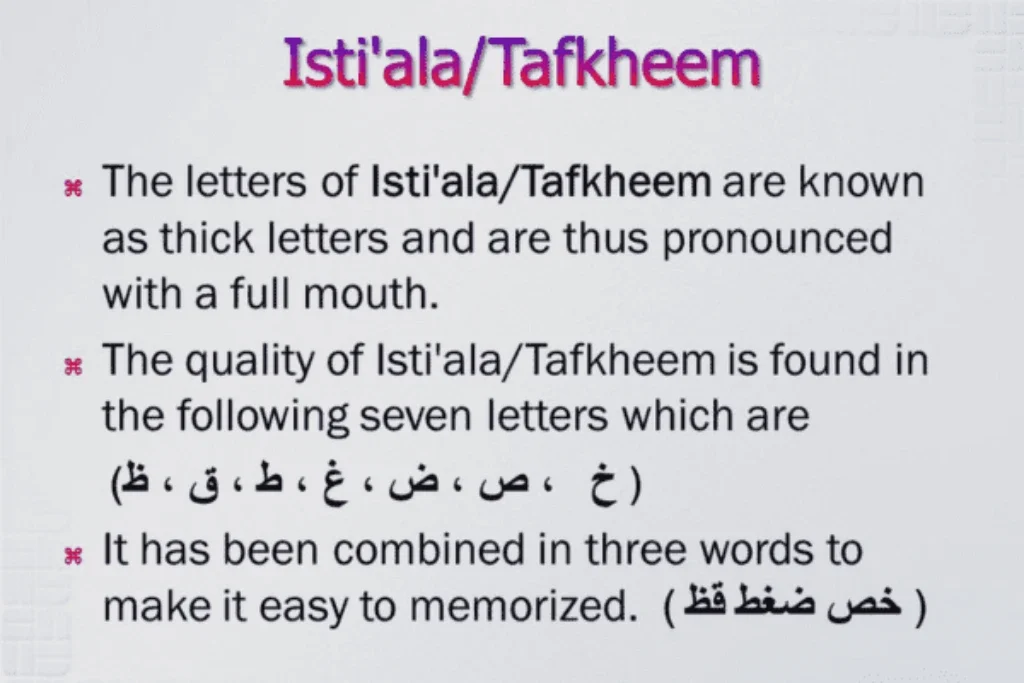
Tajweed rules for full mouth letters, Embarking on a journey to master Tajweed, the art of Quranic recitation, inevitably brings us to a crucial juncture: understanding the rules governing the pronunciation of full-mouth letters.
Tajweed, a fundamental science for reciting the Quran with precision, delves into properly pronouncing each letter and sound. Full-mouth letters present a unique challenge, demanding particular attention and proficiency to recite the holy words in their truest form.
Tajweed Lessons For Beginners: A Comprehensive Guide
Unlock the Beauty of Quranic Recitation: Mastering Tajweed Rules

It adds a melodic quality to the recitation of the Quran. Understanding Tafkheem is crucial for proper Quranic pronunciation. It is a fundamental aspect of Tajweed, the set of rules governing the correct recitation of the Quran.
When these letters appear in words, they are pronounced with a distinct weight, enhancing the beauty and precision of Quranic recitation. For example, in the word “قَدِيرٌ” (qadeerun), the letter ق (qaf) is one of the heavy letters, and its pronunciation is emphasized.
The 7 Heavy Letters in Arabic (Tafkheem Letters)
In Arabic pronunciation and Tajweed, certain letters are designated as “heavy” or “Tafkheem” letters. These letters are pronounced with a deep and emphasized sound, which adds a unique melodic quality to Quranic recitation. The 7 heavy letters are:
- ق (qaf): When pronounced, it has a deep and heavy sound, as in the word “قَمَرٌ” (qamarun), meaning “moon.”
- ط (taa): This letter is pronounced with emphasis, as in “طَيِّبٌ” (tayyibun), meaning “good.”
- ب (baa): In words like “بَيْتٌ” (baytun), meaning “house,” the letter ب (baa) is pronounced with weight.
- ج (jeem): As in “جَبَلٌ” (jabalun), meaning “mountain,” the letter ج (jeem) carries a pronounced sound.
- د (daal): In the word “دُنْيَا” (dunya), meaning “world,” the letter د (daal) is emphasized in pronunciation.
- ض (daad): When encountered in words like “ضَوْءٌ” (daw’un), meaning “light,” the letter ض (daad) is pronounced with depth.
- ك (kaaf): As in “كِتَابٌ” (kitabun), meaning “book,” the letter ك (kaaf) is pronounced with a distinct heaviness.
These heavy letters are integral to the rhythmic and melodic recitation of the Quran, and their proper pronunciation is essential for preserving the beauty and integrity of the holy text.

How to Pronounce the Heavy Letters?
Pronouncing the 7 heavy letters (Tafkheem) in Arabic is vital for proper Quranic recitation. Here’s how to articulate them, along with examples:
- ق (qaf): Pronounce it deep in your throat, like when saying “k” in “quick.” Example: قَلْبٌ (qalbun) means “heart.”
- ط (taa): Emphasize the “t” sound by touching the tip of your tongue to your upper front teeth. Example: طَعَامٌ (ta`amun) means “food.”
- ب (baa): Pronounce it firmly, like “b” in “book.” Example: بَيْتٌ (baytun) means “house.”
- ج (jeem): Create a distinct “j” sound, as in “jam.” Example: جَمَالٌ (jamaalun) means “beauty.”
- د (daal): Sound it clearly, like “d” in “dog.” Example: دُنْيَا (dunya) means “world.”
- ض (daad): Similar to “daal” but heavier. Example: ضَوْءٌ (daw’un) means “light.”
- ك (kaaf): Pronounce it firmly, like “k” in “kite.” Example: كِتَابٌ (kitabun) means “book.”
In Tarqeeq, you articulate letters with less emphasis and weight, creating a softer sound. For example, the letter ت (taa), pronounced with Tarqeeq, is softer compared to the heavy pronunciation in Tafkheem. Understanding Tarqeeq is essential for precise Quranic recitation, as it helps maintain the correct pronunciation and rhythm in various Quran verses.
The Light Letters in Arabic (Tarqeeq Letters)
In Arabic phonetics and Tajweed, some letters are considered light, and they are pronounced with a gentle and soft articulation. These light letters create a contrast to the heavy letters emphasized in Tafkheem. The light letters in Arabic include:
- ت (taa): Pronounced softly like the English ‘t.’
- ث (thaa): Articulated gently like the English ‘th’ in “this.”
- ج (jeem): Softly pronounced like the English ‘j.’
- ح (haa): Gently articulated like the English ‘h.’
- خ (khaa): Softly pronounced like the English ‘kh’ in “khan.”
Understanding the distinction between heavy and light letters is crucial for accurate Quranic recitation, as it helps maintain the Quran’s proper pronunciation, rhythm, and melody.


Essential Rules of Noon Saakin and Tanween for Beautiful Quran Recitation
Letters That Can Be Heavy or Light
Is ا (Alif) a Heavy or Light Letter?
The letter ا (Alif) is interesting because it can take on heavy and light qualities. Its pronunciation depends on whether it carries a diacritic mark (a short vowel) or not.
Examples of Alif Heavy:
When ا (Alif) is accompanied by a Fatha (ً), Damma (ٌ), or Kasra (ٍ), it becomes heavy. For example, in the word سَلَامٌ (salaamun), the ا (Alif) is heavy due to the Damma (ٌ) on the letter ل (laam).
ا (Alif) can also be heavy when it appears at the end of a word, even without diacritics. For instance, in سَمَاء (samaa’), the final ا (Alif) is heavy.
Example of Light Alif:
When ا (Alif) appears with a Sukun (ْ), indicating a pause in pronunciation, it becomes light. In the word سُوءًا (soo’an), the ا (Alif) is light because it carries a Sukun (ْ).
Understanding when ا (Alif) is heavy or light is crucial for proper Quranic recitation, as it ensures the accurate rendering of the Quran’s beautiful verses and maintains the rules of Tajweed.
Join now the Quran Tajweed Online Course at Qari.Live the Best Online Quran Academy.
Conclusion
In this comprehensive guide, we’ve explored the fascinating world of Arabic phonetics, particularly focusing on the concepts of Tafkheem (emphasis) and Tarqeeq (softening) in Quranic recitation (Tajweed). These principles play a pivotal role in preserving the beauty and precision of Quranic verses.
FAQS(Frequently Ask Questions)
What is Tafkheem?
Tafkheem is the emphasis or heaviness in the pronunciation of specific Arabic letters, especially in Quranic recitation (Tajweed). It adds a melodious quality to Quranic verses and is crucial for proper pronunciation
How many heavy letters are there in Arabic?
Arabic has seven heavy letters known as “Tafkheem” letters: ق, ط, ب, ج, د, ض, and ك. These letters are pronounced with emphasis, contributing to the beauty of Quranic recitation.
What are the Tafkheem letters in Arabic?
The seven Tafkheem letters in Arabic are ق (qaf), ط (taa), ب (baa), ج (jeem), د (daal), ض (daad), and ك (kaaf). They are pronounced with a deep and emphasized sound.
How do you pronounce the heavy letters in Arabic?
To pronounce the heavy letters (Tafkheem) correctly, you use techniques like deep throat sounds, tongue positioning, and clear articulation. For example, ق (qaf) is pronounced deep in the throat like “k” in “quick.”
Are there letters that can be both heavy and light?
Yes, certain letters, like ا (Alif), can be either heavy or light based on context. They adapt their pronunciation depending on diacritics and word position.







